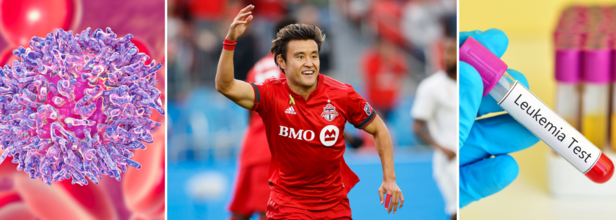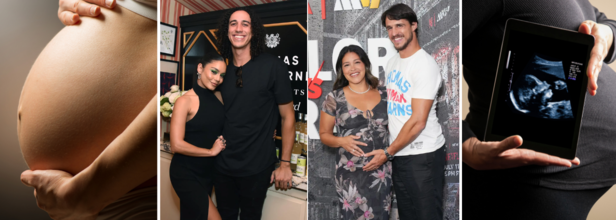- Health Conditions A-Z
- Health & Wellness
- Nutrition
- Fitness
- Health News
- Ayurveda
- Videos
- Medicine A-Z
- Parenting
- Web Stories
A Ugandan Scientist's Photos Reveal How Marburg Virus Can Spread To Different Species

Credits: Canva
Marburg virus is one of the world’s deadliest pathogens. Closely related to Ebola, it causes hemorrhagic fever with mortality rates as high as 88%. First identified in 1967 after simultaneous outbreaks in Germany and Serbia, it is classified as a zoonotic disease — one that jumps from animals to humans. The primary reservoir of the virus is the Egyptian fruit bat (Rousettus aegyptiacus), which lives in large colonies in African caves and mines.
Outbreaks in countries like Uganda and Angola have been linked to contact with bat excreta or shared fruit. Until now, however, little visual evidence existed of how Marburg might be moving across species in the wild. A new discovery at Python Cave in Uganda could change that.
Extraordinary Discovery from an Unlikely Source
In early 2025, a remarkable discovery came not from a laboratory or global health agency but from a young Ugandan undergraduate, Bosco Atukwatse. As part of a leopard-monitoring project in Queen Elizabeth National Park, Atukwatse installed camera traps near a known bat cave to monitor predator activity.
What he captured over just four months stunned his team: 261 instances of predation and scavenging around the bat colony, involving at least 14 different species—including crowned eagles, Nile monitors, blue monkeys, and leopards. These bats, crucially, are documented carriers of the Marburg virus.
Atukwatse, working with the Volcanoes Safaris Partnership Trust Kyambura Lion Project, had set out to study leopard movements. Instead, he captured unprecedented visual evidence of what disease ecologists call a "spillover interface"—a location where a virus might leap from animals into new hosts, including humans.
New Spillover Pathway: Predation
Until recently, two major spillover pathways for Marburg were recognized:
- Direct contact—through cave exploration or exposure to guano.
- Contaminated fruit—eaten by bats and later consumed by humans or other animals.
Now, Atukwatse's footage suggests a third: predation. Species ranging from blue monkeys to fish eagles were recorded feeding on the bats. This finding indicates a potentially overlooked transmission route in which predators may act as intermediate hosts, spreading the virus to humans or other wildlife.
This is the first time such a large-scale, visual dataset has documented predator-prey interactions involving a known viral reservoir in nature. While individual cases of monkeys or birds feeding on bats have been observed, never before has evidence of repeated, multi-species predation at a virus site been systematically captured.
Human Risk: A Ticking Time Bomb
Perhaps even more concerning, the cameras recorded over 400 human visitors—many tourists—approaching the cave mouth without protective equipment. While the Uganda Wildlife Authority has set up a viewing platform 35 meters away, many visitors ignored safety protocols, walking within two meters of the bat colony.
This proximity to a Marburg hotspot, combined with the newly observed predator activity, presents a chilling risk. In the past, tourists have contracted the virus in the same region, and now more evidence suggests that such spillover scenarios may be far more complex and frequent than previously thought.
A Wake-Up Call for Global Health
Atukwatse’s discovery underscores the critical role of local scientists in uncovering potential pandemic threats. Unlike multimillion-dollar surveillance programs, this breakthrough came from ecological instinct and basic camera equipment. It points to a vital gap in global health: the need to fund and empower local field researchers who are closest to where such threats emerge.
Disease ecologists have long warned that the next pandemic may begin in remote animal-human interfaces. But until now, these warnings were largely based on models and assumptions. This footage shifts that narrative—providing real, observable evidence of a spillover ecosystem in action.
A New Era of Spillover Science
This discovery could mark a pivotal moment in spillover research. It not only confirms theories about how viruses like Marburg may spread through predator chains but also highlights the danger of human encroachment into such ecosystems.
In the future, early warning systems must include support for grassroots surveillance, like the kind Atukwatse led. The next deadly virus may already be circulating—visible not only under a microscope, but also through the lens of a trail camera in the hands of a watchful local scientist.
TFC Star Tsubasa Endoh Announces Retirement After Leukemia Battle

Credits: (Cole Burston/CP) and Canva
TFC player Tsubasa Endoh, 31, who was diagnosed with acute undifferentiated leukemia in December 2021, has retired as a Toronto FC player.
On Friday, Toronto announced that it had signed Endoh to a one-day contract to officially retire as a TFC player. He had also been honored before Saturday's game against Atlanta United. Toronto GM Jason Hernandez in a state said, "It is truly a special moment for Toronto FC to have Tsubasa come back and officially retire as a Red. The club wanted to give him this recognition for all his contributions over six years and celebrate his career."
How Was He Diagnosed?
His contract with TFC had expired following the 2021 season, after that he signed Melbourne City FC in Australia's A-League in early 2022. It was later the same year when he joined Los Angeles Galaxy reserve side. It was when he was in LA that his body was malfunctioning.
Blood work showed an alarming white blood cell count. A trip to ER then turned into an 8-day hospital stay, it was there when he was told that he may have cancer. He returned to Japan to be with his family and was diagnosed with the rare form of leukemia.
He is also battling a lot of other things on the side, like it is said that cancer does not come alone. His battle also includes chronic GvHDs (graft-versus-host disease), a systemic disorder occurring when immune cells from transplanted tissue recognize the recipient's body as foreign and attack its cells.
He has also been through four rounds of chemotherapy until now, radiation and also a bone marrow transplant. However, during his last round of chemotherapy, which lasted for 8 weeks, no visitor was allowed.
"You spend so much time alone … It's not easy," he said. "The silver lining was to get all the support from TFC fans and the Galaxy, the guys from Maryland."
Yet, to all these, he says, "It's OK."
He is also suffering from debilitating body cramps and is currently on 15 different medications. He also is suffering from fascia inflammation (fascia is the thin cover of tissue that holds muscles in place), which means picking something up on the floor can be difficult because his muscles tighten so much. He sometimes has to stop typing when his fingers cramp. Putting on socks is painfully hard, reports TSN.
"Those are the little things that add up. But this is my life now. I try not to focus on negative things in life. It's what it is. You just have to adapt and accept it," he says.
What Is Acute Undifferentiated Leukemia?
As per the National Cancer Institute, USA, leukemia is a broad term for cancers of the blood cells. The type of leukemia depends on the type of blood cell that becomes cancer and whether it grows quickly or slowly. Leukemia occurs most often in adults older than 55, but it is also the most common cancer in children younger than 15.
However, acute undifferentiated leukemia is different, notes the American Society of Hematology (ASH). The ASH publication from 2019, notes that it is a rare and by definition, has neither lymphoid nor myeloid lineage specific markers. Given its rarity, little is known about its incidence, survival, and optimal management.
National Cancer Institute's Surveillance, Epidemiology, and End Result Program (SEER), notes that this cancer affects the bone marrow and peripheral blood. There are too few cases to know whether there is a predilection for other sites. These leukemias are very rare and nothing substantial is known about their frequency. While anecdotal experience generally considers these leukemias to be of poor prognosis, information is too scanty to make any definitive statements.
The National Institute of Health (NIH), USA also notes that there are no established treatment for this condition. However, chemotherapy, allogenic hematopoietic stem cell transplantation, radiation, etc. could work, but an optimal strategy remains undefined due to rarity of this cancer.
Vanessa Hudgens, Gina Rodriguez Announce Baby Number 2: Does Becoming A Mother After 35 Carry Risks?

In photos: Vanessa Hudgens and Cole Tucker (Araya Doheny/Getty); and Gina Rodriguez and Joe LoCicero (John Nacion/FilmMagic), and Canva
On Friday, July 11, Gina Rodriguez announced her pregnancy with her second child at the red carpet for Netflix' Katie Taylor vs Amanda Serrano 3. She, 40, was joined by her husband, 38, Joe LoCicero, and both were beaming with joy of happiness.
Just a day after, on July 12, Vanessa Hudgens, 36, announced the arrival of her baby No. 2. She is expecting her second child with her husband Cole Tucker, nearly a year after giving birth to their first child. She also posted a photo with her baby bump and captioned, "Round two!!!"
Both have shared their news of pregnancy with their second child after they have crossed their 30s. While this, as also published in many studies including on Office for National Statistics titled Childbearing for women born in different years, England and Wales: 2020, does point out that more and more women are having their first child in their 30s. Another recent study published in 2023, in BMC journal Reproductive Health also notes that "in recent decades women's age at birth of their first child has risen markedly in many countries, and an increasing number of women do not establish a family until their late-twenties to mid-thirties." However, a question that continues to linger around is whether it is safe for the woman and the child to have a pregnancy after 30?
Having Kids Later In Life
As per National Institute of Health (NIH), US, about 20% of women in the US have their first child at the age of 35. However, it does not mean that it does not have its own problem.
While factors like financial stability and better and timely family planning may have resulted in a so-called 'later' pregnancy. However, it does come with its own risks.
Fertility And Age
NIH notes that concievng becomes more difficult as you age. This is constant for both men and women. Women are born with a set number of eggs. Each month, a woman's ovary releases an egg to be fertilized. This is called ovulation. However, before that, her body recruits many eggs in preparation for this process. A handful of eggs are developed and matured, but usually only one makes it to ovulation.
“As women age, they’re still fertile, but their odds of pregnancy are decreased because they’re not making as many good eggs that will fertilize and divide normally and turn out to be an embryo,” explains Dr. Alan Decherney, an NIH fertility expert, mentioned on NIH website.
A woman’s fertility begins to gradually decline after the age of 30, as both the number and quality of her eggs decrease over time. This decline continues until menopause, which typically occurs between the ages of 45 and 55. At that point, periods stop and natural fertility ends.
Men also experience age-related changes. As they grow older, they may produce fewer sperm, and the quality of their sperm may decrease. In both men and women, this age-related drop in reproductive health is linked to a higher risk of certain conditions in their children, such as autism spectrum disorder, Down syndrome, and schizophrenia.
Miscarriage
Another risk during 'late' pregnancies are the increasing risks of miscarriage. Anja Bisgaard Pinborg, head of the fertility department at Copenhagen's Rigshopitalet and clinical medicine professor at the University of Copenhagen tells BBC, "The other thing that that happens in the late 30s is that the chromosomes in the X (chromosome) are getting more unstable – that's why there's an increased risk of chromosomal aberrations, such as Down syndrome. So, many of the pregnancies will end up in a miscarriage."
As per the National Health Service, UK, In women under 30, 1 in 10 pregnancies will end in miscarriage, while in women aged 35 to 39, up to 2 in 10 pregnancies will end in miscarriage. The number goes up to 5 in 10 pregnancies, as the age increases to 45.
Other Maternal Complications
A 2021 study published in the International Journal of Women's Health, titled Management of Pregnancy in Women of Advanced Maternal Age: Improving Outcomes for Mother and Baby, notes that pregnancy at advanced maternal age, which means 35 or more, is considered a risk factor for adverse maternal and perinatal outcomes. Possible complications include:
- Increased risk of spontaneous miscarriage
- Preterm labor
- Gestational diabetes mellitus
- Pre-eclampsia, stillbirth
- Chromosomal abnormalities
- Cesarean delivery
The study also notes possible adverse fetal outcomes, which include infants small for gestational age and intrauterine growth restrictions, low Apgar score, admission to neonatal intensive care units, and an autism spectrum disorder.
Martin Frizell Shares How His Wife Fiona Philips Thought His To Be A Kidnapper Due To Her Alzheimer's Disease

Credits: Instagram
Alzheimer's disease, as per the National Health Service, UK, is the most common form of dementia. It is a progressive brain disorder that gradually impairs memory, thinking skills and eventually, the ability to perform even simple tasks. This also results in the day-to-day ability of functioning, including finding it difficult to identify a known person, experiencing brain fog, and more.
The Kent-born journalist 64 and former GMTV presenter Fiona Phillips who in 2023 announced that she had been diagnosed with early onset dementia thought her husband had kidnapped her because of "delusions", which were one of the symptoms or traits of the Alzheimer's disease. The Independent reports that she was diagnosed with the same in 2022.
She Thought It Was Menopause
The earliest symptoms were brain fog, this is also common in menopausal women, so her initial guess too was menopause when she experienced "brain fog and anxiety".
Her husband, Martin Frizell, who is the former This Morning editor, has helped her through her condition and has also helped her write a memoir titled Remember When. The memoir aims to help others who have been diagnosed with the disease.
Pain, Anxiety, and Degrading Memory
Frizell, who is 66, shared an update on Phillip's condition on Friday saying that there are times when she does not remember who her husband is.
Frizell said that she "doesn't quite know that I'm her husband." He shared the update with This Morning on Friday and said that Fiona sometimes becomes confused about who he is. He further added pointing to a recent photo in the book, "She is looking great and she is kinda smiling...And what you don't know is she thought I'd kidnapped her." However, he did add that she'd recognise him "most of the time."
Speaking to ITV, Frizell also said, "She'd love to be here, but she's got anxiety. She's got a kind of secondary problem that causes her to be in pain, a lot, a lot of pain, which adds to the confusion. So it's difficult."
He explained that this disease comes with "all sorts of delusions", and that this leaves his wife "kind of worked up".
The forgetfulness is such that on some occasions, Phillips asks to go visit her parents, to which, Frizell says, "I have not got the heart to say they aren't here. What you do is, you say, 'Let's get out coats on, let's get out shoes on', we go around the block a couple of times and come back in. And she says, 'Oh I am home now'."
What Is Alzheimer's?
Alzheimer’s is the leading cause of dementia—a syndrome marked by a continuous decline in brain function, as noted by the NHS.
It is a progressive disease that gradually affects memory, thinking, and other cognitive abilities, with symptoms worsening over time.
While there is no cure yet, certain medications can help ease some of the symptoms temporarily. To this, Frizell says, "Society has decided we’re not going to take it as seriously as we should. The money that’s there for Alzheimer’s research, it’s like buying a Starbucks cup of coffee, basically trying to fight a disease. It’s impossible.”
He also mentioned that early in their relationship, they discussed Phillips granting him lasting power of attorney, so he could make health and financial decisions on her behalf if she ever became unable to do so herself.
Last year, in November, he announced that he was stepping down as the editor of This Morning, after a decade in the post, saying that he was expecting "family priorities to change" and needed to free up time for them.
© 2024 Bennett, Coleman & Company Limited

